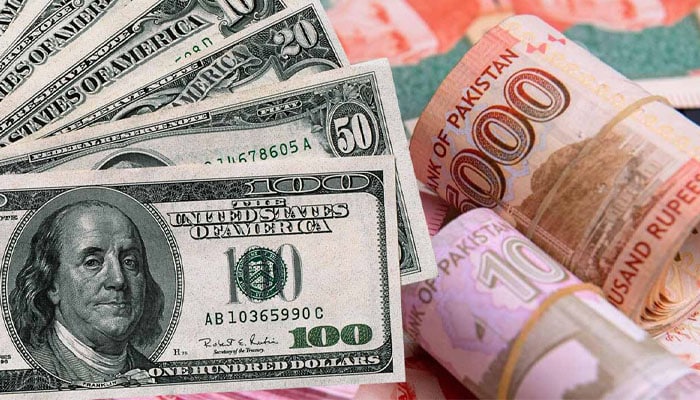Introduction To Dollar Rate Today in Pakistan
The dollar rate in Pakistan today holds significant importance in the country’s economic landscape. It not only affects the country’s trade balance but also impacts the daily lives of individuals. From imports and exports to fuel prices and basic goods, the exchange rate of the dollar is a critical factor. Similarly, the dollar rate today in Pakistan is another focal point for individuals and businesses involved in trade with the United Kingdom. In this article, we will explore the dynamics of currency exchange rates in Pakistan, the factors influencing them, and their economic implications.
Overview of Exchange Rates in Pakistan
Exchange rates in Pakistan fluctuate due to various internal and external factors. The dollar rate in Pakistan today represents the value of the Pakistani rupee (PKR) compared to the US dollar (USD). This rate is influenced by international trade, foreign reserves, and macroeconomic policies. Similarly, the pound rate today in Pakistan refers to the exchange value of the PKR against the British pound (GBP).
These rates are crucial benchmarks for importers, exporters, and financial analysts. Moreover, fluctuations in these rates directly impact inflation, cost of living, and investment opportunities within the country.
Factors Affecting Dollar and Pound Exchange Rates
-
Economic Stability
The stability of Pakistan’s economy plays a pivotal role in determining the dollar and pound rates. A strong economy typically bolsters the rupee, reducing dependency on foreign currencies. -
Foreign Reserves
The State Bank of Pakistan (SBP) manages foreign reserves to stabilize the exchange rates. Low reserves weaken the rupee, increasing the dollar and pound rates. -
Trade Deficit
Pakistan’s trade deficit influences the demand for foreign currencies. High imports compared to exports create an imbalance, leading to a higher dollar and pound rate. -
Inflation Rates
A high inflation rate decreases the purchasing power of the rupee, making foreign currencies like the dollar and pound more expensive. -
Geopolitical Events
Political and economic events on a global scale, such as oil price fluctuations or international sanctions, also impact the exchange rates. -
Government Policies
Policies related to borrowing, monetary policy, and taxation have a direct impact on the dollar and pound rates in Pakistan.
Impacts of Rising Dollar and Pound Rates
1. Inflation and Cost of Living
A higher dollar rate increases the cost of imported goods, contributing to inflation. This affects essential commodities like fuel, medicine, and food, making them expensive for the average consumer.
2. Trade and Business
Exporters may benefit from a weak rupee, but importers face higher costs. Businesses that rely on imported machinery or raw materials often face reduced profitability.
3. Investments and Savings
Currency fluctuations discourage foreign investments and create instability in the stock market. Local investors also suffer due to the declining value of their savings.
4. Foreign Debt
Pakistan’s external debt, primarily denominated in dollars, increases with a weaker rupee. This adds further pressure on the government to allocate more resources for debt repayment.
5. Travel and Education
For individuals studying abroad or traveling, a higher dollar and pound rate significantly raises expenses. This is a growing concern for families sending children to the US or UK for education.
Current Trends and Projections
The dollar rate in Pakistan today reflects ongoing economic challenges. In recent months, Pakistan has experienced sharp fluctuations due to global financial instability and domestic issues like inflation and reduced foreign reserves.
On the other hand, the pound rate today in Pakistan has also shown a steady increase due to similar reasons. With the pound being a strong currency globally, its exchange rate is naturally higher compared to the dollar.
According to financial experts, unless Pakistan improves its trade deficit, builds foreign reserves, and enforces sustainable fiscal policies, exchange rates for both the dollar and the pound will remain volatile.
Steps to Stabilize the Exchange Rates
-
Boosting Exports
Developing industries such as textiles, agriculture, and IT can help increase export revenues and reduce the trade deficit. -
Foreign Investments
Encouraging direct foreign investments through tax incentives and ease-of-business policies can strengthen the rupee. -
Controlling Inflation
The government needs to adopt measures to control inflation, thereby stabilizing the rupee. This includes managing subsidies, controlling fuel prices, and reducing unnecessary expenditures. -
Negotiating Debt Relief
Seeking extended repayment periods or debt relief from international lenders can reduce pressure on the rupee. -
Diversifying Foreign Reserves
Investing in other stable currencies besides the dollar and pound can help reduce dependency and stabilize the exchange rates.
Tips for Individuals Affected by Exchange Rate Fluctuations
-
Invest Wisely
Diversify investments in stable assets such as gold or real estate to counteract currency devaluation. -
Stay Updated
Regularly monitor the dollar rate in Pakistan today and the pound rate today in Pakistan for informed financial decisions. -
Cut Unnecessary Expenses
Reduce reliance on imported goods and focus on locally produced items to minimize the impact of exchange rate hikes. -
Savings in Foreign Currencies
If feasible, maintain savings in stable foreign currencies to protect against rupee devaluation.
Conclusion
The dollar rate in Pakistan today and the pound rate today in Pakistan are indicators of the nation’s economic health. Their fluctuations directly affect not only the country’s macroeconomic stability but also the financial well-being of individuals. Addressing the root causes of currency instability requires collective efforts from the government, businesses, and citizens alike. Through strategic planning, policy reforms, and increased economic activity, Pakistan can strive towards a stable currency and a stronger economy.
Stay informed and make smart financial decisions to mitigate the impact of these fluctuations.

